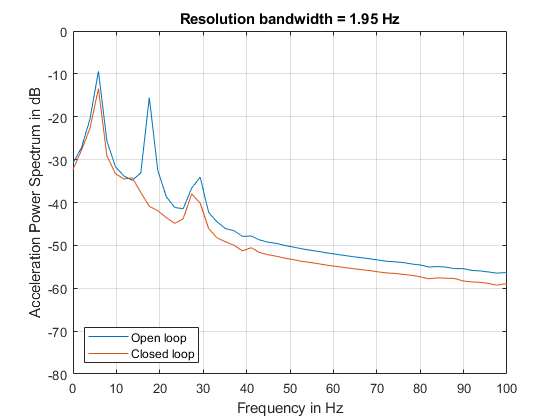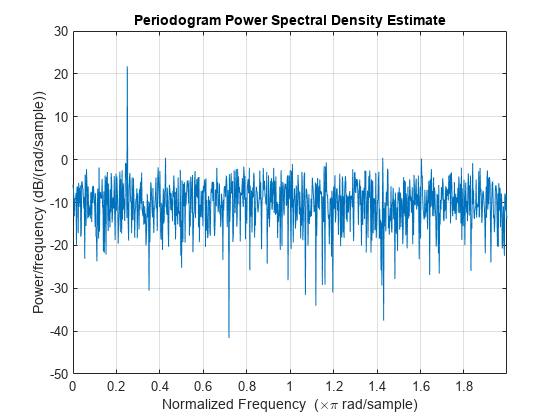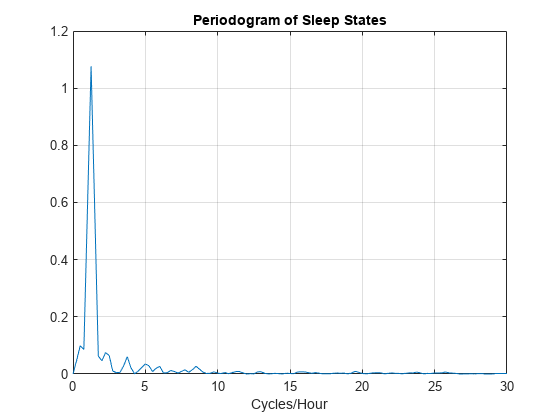频谱估计
周期图,韦尔奇和隆布-斯卡格尔 PSD,相干性,传递函数,频率重排
使用 periodogram、pwelch 或 plomb 分析均匀或非均匀采样信号的频谱内容。使用重排锐化周期图估计。确定信号之间的频域相干性。基于输入和输出测量值估计传递函数。研究频域中的 MIMO 系统。
App
| 信号分析器 | 可视化和比较多个信号和频谱 |
函数
主题
- Nonparametric Methods
Learn about the periodogram, modified periodogram, Welch, and multitaper methods of nonparametric spectral estimation.
- Detect a Distorted Signal in Noise
Use frequency analysis to characterize a signal embedded in noise.
- 测量信号的功率
估计包含信号大部分功率的频带宽度。对于失真信号,确定基波和谐波中存储的功率。
- 振幅估计和填零
通过填零获得正弦信号振幅的精确估计。
- Bias and Variability in the Periodogram
Reduce bias and variability in the periodogram using windows and averaging.
- 比较两个信号的频率成分
识别频域中信号之间的相似性。
- 使用频率分析求周期性
频谱分析有助于表征数据中的振荡行为,并测量不同周期。
- Significance Testing for Periodic Component
Assess the significance of a sinusoidal component in white noise using Fisher's g-statistic.
- 交叉频谱和幅值平方相干性
获取正弦分量之间的相位滞后,并识别时间序列中的频域相关性。
- Price Weather Derivatives (Financial Instruments Toolbox)
This example demonstrates a workflow for pricing weather derivatives based on historically observed temperature data.




